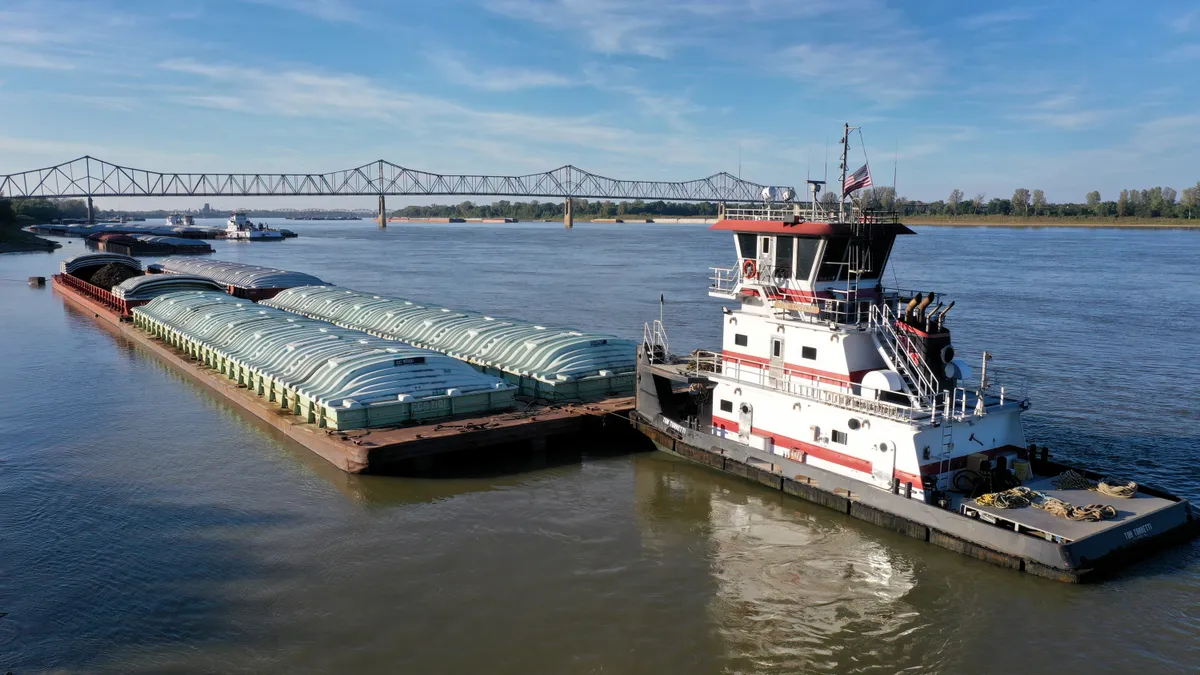Dive Brief:
- Depleted water levels in the Mississippi River have begun to affect barge shipping, raising agricultural producers' fears of transportation slowdowns.
- American Commercial Barge Line implemented draft reductions up to 20% for loadings near the Lower Mississippi River due to falling river levels. It also reduced tow sizes, which is expected to delay transit by up to 48 hours.
- Barge capacity overall has been reduced by 10% to 20% along the river, Anna Wolverton, meteorologist with the National Weather Service, said during a July 6 webinar for the National Integrated Drought Information System. The Lower Mississippi River is nearly 10 feet below normal for this time of year.
Dive Insight:
For the second year in a row, a drying Mississippi River has prompted shipping restrictions and slowed down transportation of critical freight.
Low water levels are unusual for this time of year, which is typically considered the Midwest's rainy season. At times earlier this month, levels along some parts of the Lower Mississippi River beat out record lows set in 1988, according to Wolverton.
Despite recent rain, the Mississippi River is still expected to reach a critical stage of low flows in mid-July, Wolverton said. At that point, navigating the river would become more difficult and raise the prospect of groundings.
Lower levels in the summer are also causing concern that the situation could worsen in the fall and winter, when the river naturally hits its lowest point. However, a forecasted El Niño weather system later this year is expected to bring wetter conditions to the Midwest.
Many areas of the Midwest have experienced some form of drought in recent years, though dry conditions have rapidly intensified in the past few months. Lower river levels last fall prompted many farmers to rely more on truck and rail transportation, raising costs.











